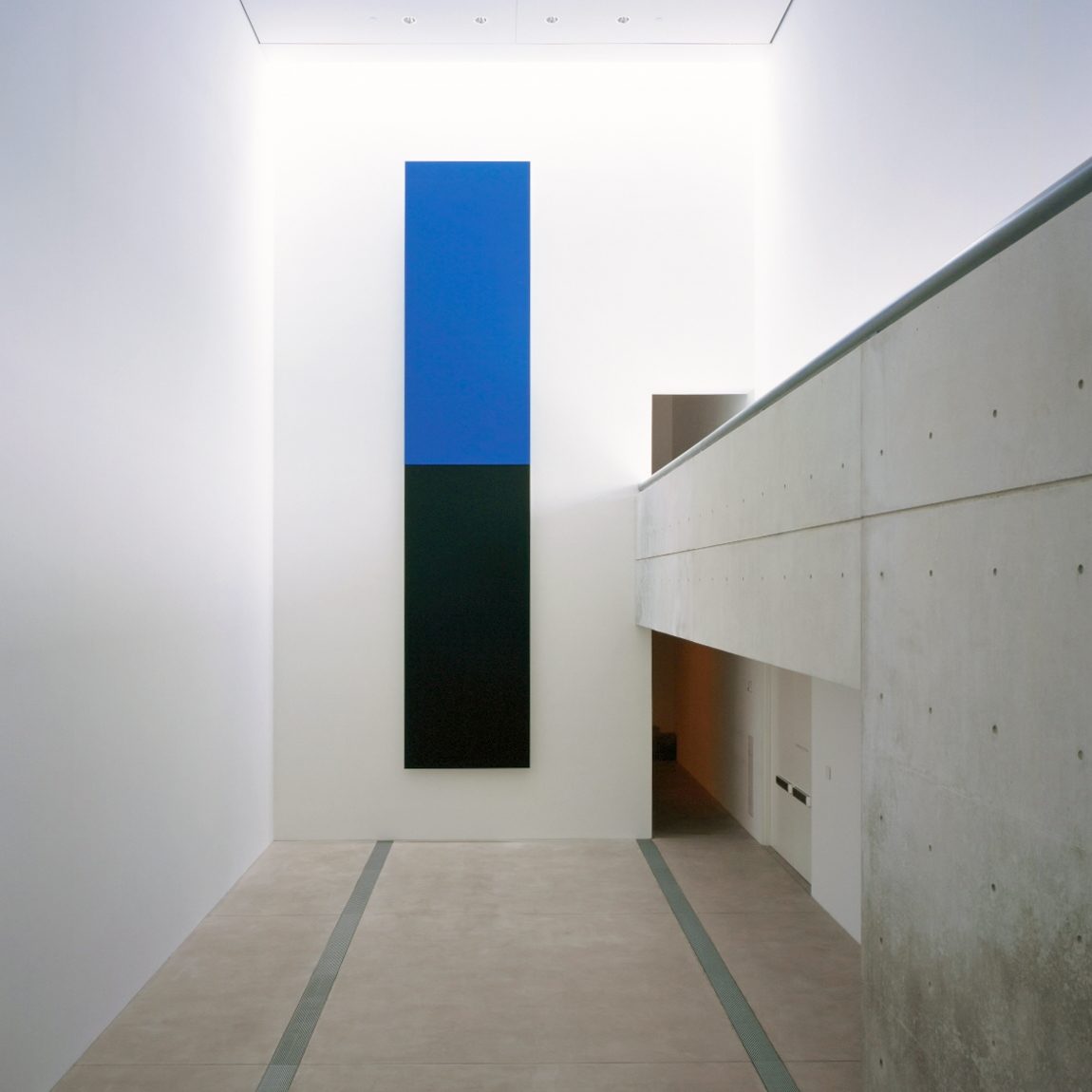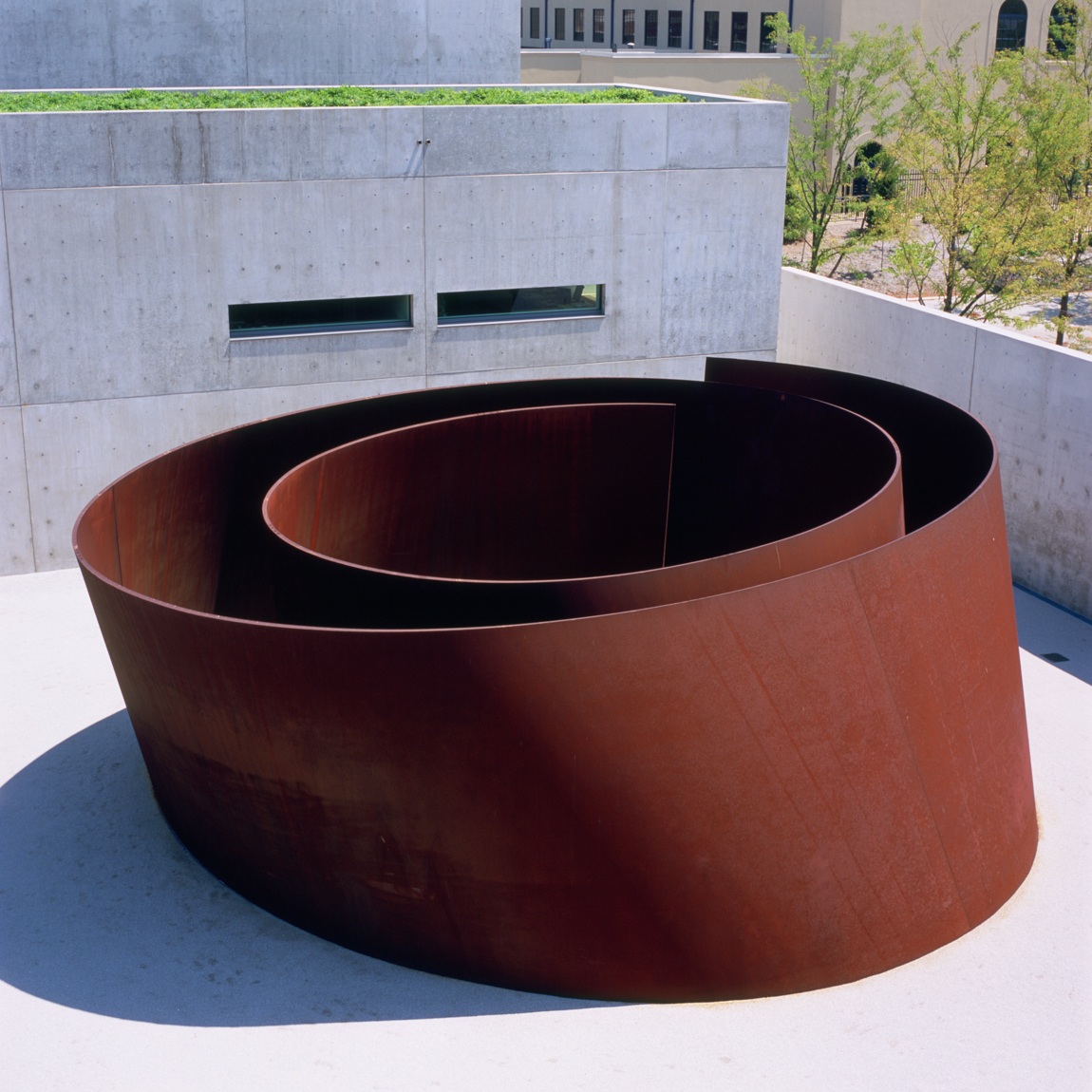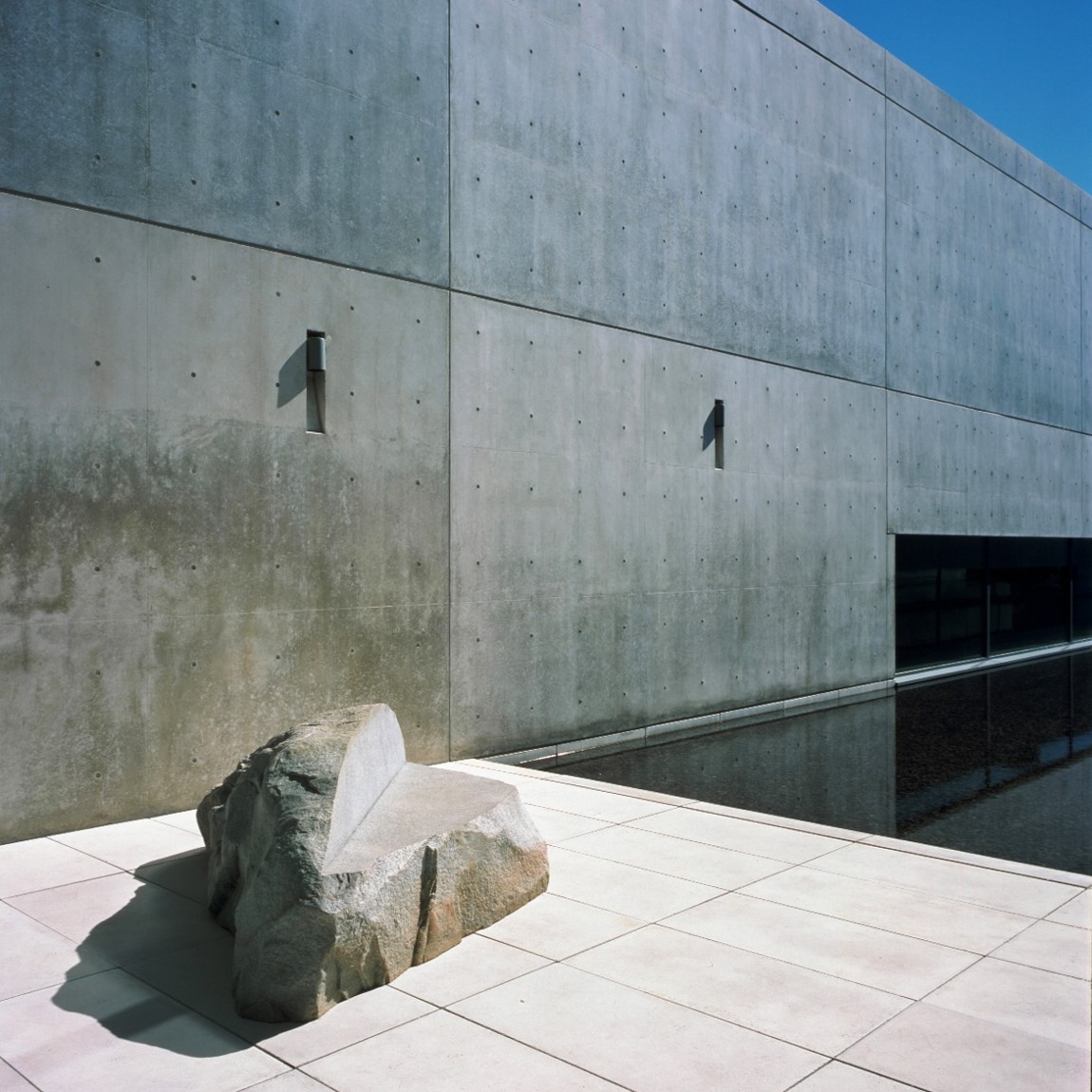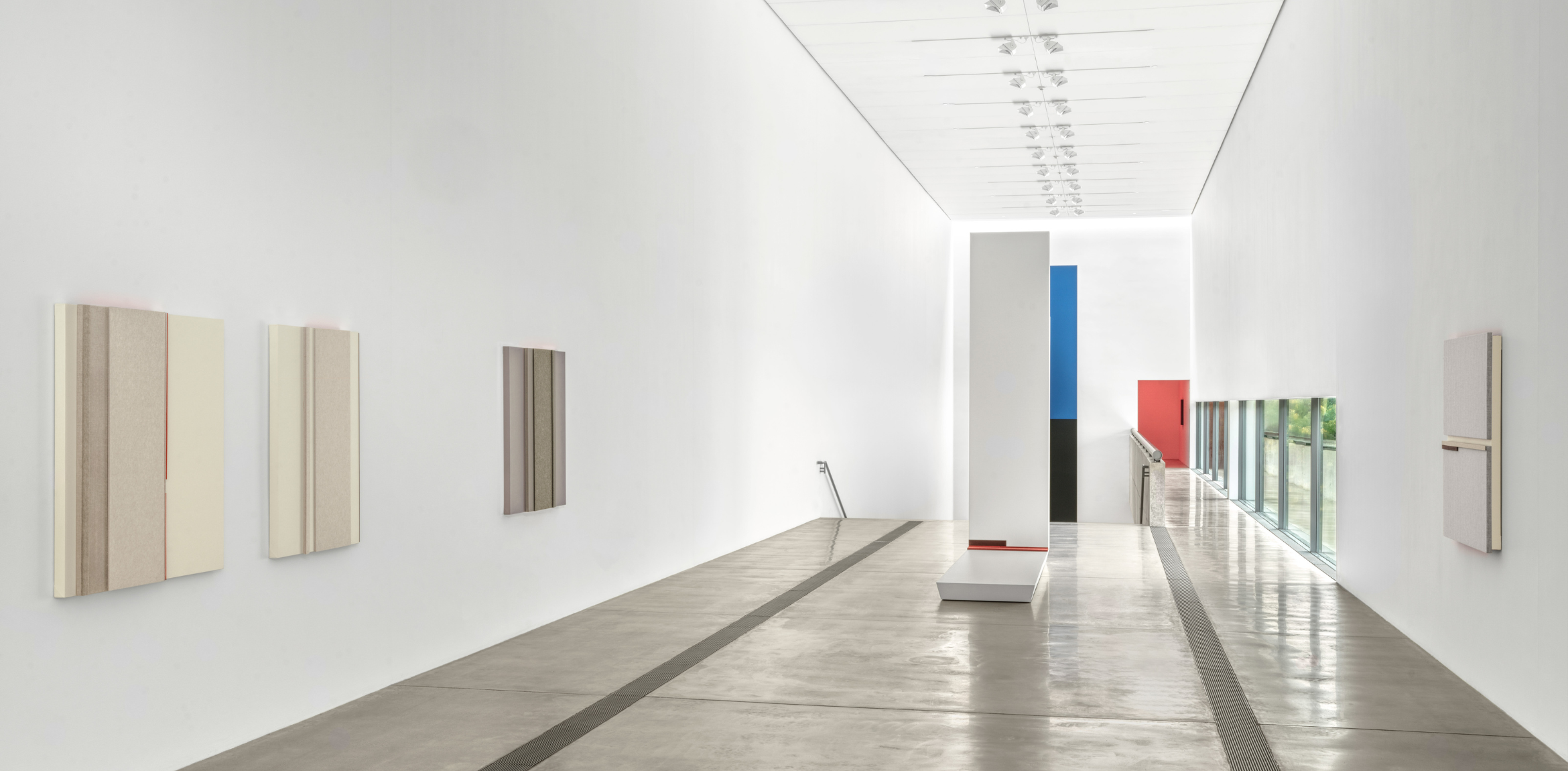Collection
In addition to presenting temporary art exhibitions, the Pulitzer Arts Foundation has three sculptures in its collection that are permanently on view. These artworks have simple, geometric forms and are placed in conversation with the museum architecture. In the words of founder Emily Rauh Pulitzer, each of the artists—Ellsworth Kelly, Richard Serra, and Scott Burton—as well as the architect Tadao Ando, use “space and our perception of it as a primary element in [their] work.” They all have their own ways of “bringing ideas alive in form, space, and material.”

Ellsworth Kelly
Blue Black, 2000
“The most pleasurable thing in the world, for me, is to see something, and then translate how I see it.” Ellsworth Kelly
Ellsworth Kelly (1923-2015) created the twenty-eight foot wall sculpture, Blue Black, for the Pulitzer’s Main Gallery in 2001. The work is composed of two painted aluminum panels, installed on a thirty-five-foot high wall and mounted roughly four inches off the wall, directly beneath a narrow skylight. The artist carefully selected the two colors, dimensions, and location to achieve a balance with the architecture. Kelly was particularly attuned to how visitors might experience this work, commenting: “When you are coming into the entrance, you only see about a little more than half of the picture. As you move toward it, it then reveals itself.”
Although Kelly’s artworks often look abstract, they frequently start with real-world inspiration. Struck by the sight of a doorway or a lake, the artist would simplify what he saw into geometric shapes and basic colors. Kelly often used industrial materials and processes as well. Blue Black is made of aluminum and painted with an airbrush—a technique used on cars and airplanes for highly even paint application. Kelly used it to focus our attention on the impact of the colors and shapes while engaging with elements of architecture and natural light.
Blue Black, 2001
Painted aluminum
336 x 70 x 2 1/8 inches
Pulitzer Arts Foundation. Commission and gift of the artist, 2001
© Ellsworth Kelly Foundation
Photography by Robert Pettus

Richard Serra
Joe, 1999
“I think the real content of these pieces are walking into them, through and around them…. if the piece is successful or unsuccessful for you, it’s totally determined by you walking and looking. Nothing else but your relation to the work as perceived by you, nothing more.” Richard Serra
Richard Serra (b. 1938) was invited to make a sculpture for the museum’s courtyard for the opening of the building in 2001. The result was Joe, a massive torqued spiral made of Cor-Ten Weathering Steel. Serra often works with this industrial material, having grown up around shipyards and steel mills. Joe exemplifies how Serra uses material, mass, and gravity to heighten experiences of space. Visitors are invited to enter into the sculpture and walk a spiral path into the sculpture’s center. The tilted walls expand and contract along the pathway. The artist was especially interested in the visitor’s experience of moving through and around the work, explaining: “When you walk between the walls, you become implicated in the tremendous spiraling force of the movement. The velocity projects you ahead into an open interior space that frames the sky.” Selected for this specific location, the sculpture’s textured surface and curving shape contrast and complement the museum’s smooth concrete and straight lines. Serra named the artwork in honor of the late Joseph Pulitzer Jr., who commissioned Serra’s first site-specific outdoor sculpture in 1970.
Joe, 1999
Weathering steel
Outer spiral approximately 163 x 576 x 480 inches
© Richard Serra
Photograph by Robert Pettus

Scott Burton
Rock Settee, 1988-1990
Scott Burton (1939-1989) made the five-ton granite sculpture Rock Settee for people to sit on, rest, and enjoy. From the back, the artwork simply looks like a boulder, but moving around the sculpture reveals a wide seat cut into the solid stone. Rock Settee, like much of Burton’s work, is both sculpture and functional furniture. He created furniture designed for creative and playful interactions. Working in this way, Burton made art that is approachable yet unexpected. His early sculptures were made from found objects, and by the 1980s he was working in a variety of materials including bronze, granite, plastic, and concrete. Burton’s sculptures are inherently functional and are designed to be used. He has referred to his art as “sculpture in love with furniture.”
Rock Settee, 1988-1990
Granite
35 1⁄2 x 106 x 62 1⁄2 inches
© Estate of Scott Burton / Artists Rights Society (ARS), New York
Photograph by Robert Pettus
